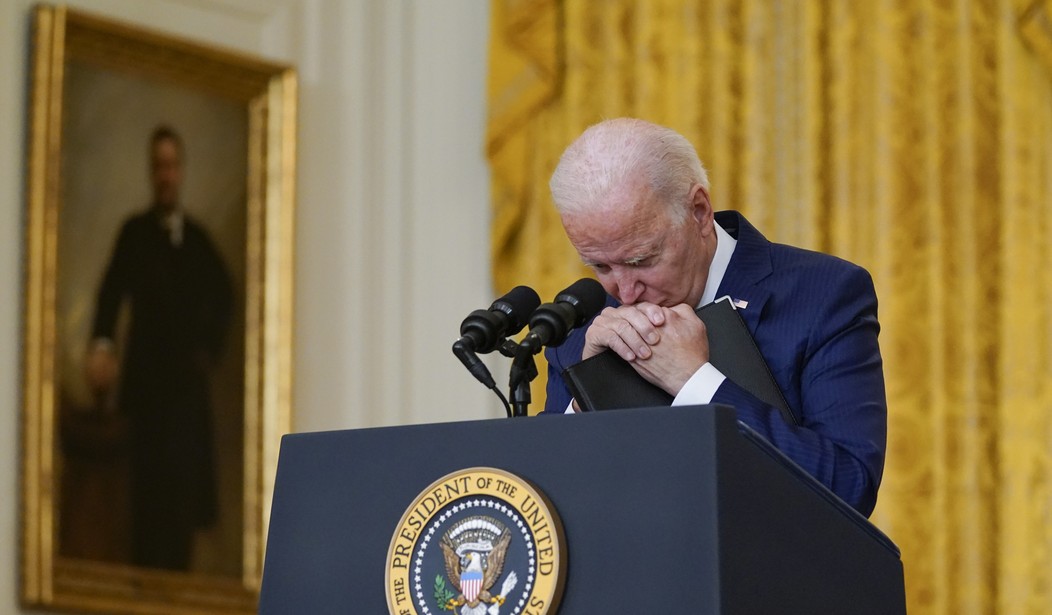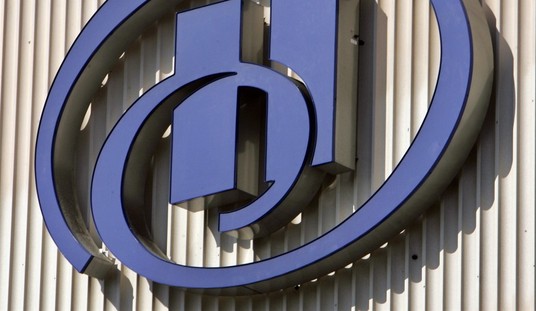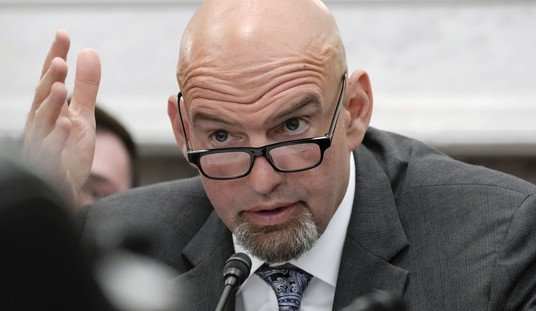We’re 13 months out from Election Day, of course. But in the Democratic wave year of 2018, among scores of polls taken over a span of almost two years, Democrats trailed in only one. (Rasmussen. And that was by a single point.) In just the past two months, they’ve already trailed in two polls. Today’s new one from Quinnipiac is the second.
In 2018, by the time the election rolled around, Democrats led by an average of 7.3 points on the generic ballot. In the Republican wave election in 2014, the GOP led by an average of 2.4 points in the final polling. Today’s Quinnipiac poll has Republicans up three. Clearly it looks a lot more like 2014 than 2018.
On top of that, Quinnipiac has tended to lowball Republicans in its polling in recent years. The full extent of the shift towards the GOP as Biden’s support has tanked over the last month may not be revealed here.
Early though it may be, if I were Dems I’d be nervous that they’re pulling numbers this weak in a survey that has support for both infrastructure bills looking solid. If passing Biden’s domestic agenda isn’t enough to get them out of a hole, what is?

A month ago the numbers were reversed, with Dems ahead 47/43. When I saw that, I assumed there must have been a fall-off among Democratic voters in supporting their own party out of frustration with the infrastructure deadlock. But that’s not it. Looking back at September’s Quinnipiac poll, the Dem numbers on the generic ballot are nearly identical today. The big shift is among independents, who supported Democratic control of Congress at a 40/38 clip last month and now prefer Republicans, 48/34.
Independents are turning on Joe Biden. But then you knew that already.
Did you realize just how much they’ve turned on him, though? Henry Olsen has been sifting through his recent polling and finds that Biden currently is no more popular with indies than Donald Trump was at this point:
An average of only 39 percent of independents approved of Biden’s performance in the three polls taken between Sept. 18 and 26 that made data available for those voters; 52 percent disapproved. Trump’s comparable numbers among independents in three polls taken between Sept. 22 and 27, 2017, were 38 percent approval and 50 percent disapproval. That means Biden’s minus-13 net job approval among independents is statistically identical to Trump’s minus-12…
Biden’s abysmal standing with independents spells disaster for Democrats in the midterm elections if it does not substantially improve. Virtually all Senate and House candidates in 2018 and 2020 received vote shares closely resembling Trump’s job approval in their jurisdiction. Maine’s longtime Republican incumbent, Susan Collins, was the only GOP Senate candidate to receive a higher share of the vote than Trump’s job approval as registered in each state’s exit poll. If the same pattern emerges in 2022, Biden’s current showing means Democrats will lose almost every seriously contested Senate seat next year, giving Republican leader Mitch McConnell (Ky.) solid control of that chamber. Redistricting complicates the House picture, but Democrats should expect to lose more than 20 seats and likely more than 30 on the current dismal data.
Strong support from his own party is buoying Biden up nationally at the moment but liberals are concentrated in cities and big blue states like New York and California. Independents are the one who’ll decide purplish House races. And right now they’re poised to deliver a beating to the president and Democrats.
The generic ballot isn’t the only grim number for Dems from Quinnipiac. A month ago congressional Democrats were -16 in net approval while congressional Republicans were -38. This month the two parties are at near parity, with Dems crashing to -33 and Republicans rising to -35. Among independents, congressional Dems went from -26 net approval to -47 in a month. Gallup has seen the same trend this year, with Democrats tanking overall since January:

Nine months ago Dems were even on approval while Republicans stood at -22. Nine months later: -12 and -16, respectively. Unsurprisingly, it’s independents whose views of the party have changed the most, dropping from 48 percent support in January to 35 percent now. Biden’s honeymoon period ended, COVID came roaring back thanks to Delta, the White House royally bungled the Afghanistan withdrawal, and now the two wings of his party are at loggerheads over infrastructure. He should be grateful that Democrats haven’t fallen further.
Like I say, the surprise in Quinnipiac’s data is that both arms of the infrastructure package are polling well. The bipartisan roads-and-bridges bill draws 62/34 support while the $3.5 trillion reconciliation social-welfare bill (which will end up coming down from that topline number) is at 57/40. Each has become a bit less popular since last month, though, as Democrats’ numbers have sunk. And even if Congress ultimately ends up passing both, Dems may be kidding themselves if they think doing so will improve their chances much. Politico made an interesting point this morning:
Our ears perk up when we hear these accounts of how the president will use the bully pulpit to rally the public behind his agenda. Most politicians want to believe that it’s possible to do that. But there’s a decades-long history of research that shows … it almost never works.
In fact, it often backfires, because a big presidential policy speech can sometimes serve to do more to harden the opposition against his policy than to persuade voters to change their minds.
Independents are evenly divided on the reconciliation bill, 50/48, so passage may not help Biden much there. The bipartisan bill is more popular with indies at 62/35, but the fact that it was passed on bipartisan lines means those who are otherwise inclined to vote Republican can give the GOP some credit for that achievement. It may be that even indies who support the reconciliation bill will decide upon its passage that that’s more than enough spending for now and that it’s time to provide a Republican check on Biden’s agenda.
Midterm voters tend to turn out in opposition to what they fear, not to reward what they support, which is why the out-party nearly always wins. There’s no reason to think the balance of motivation next fall will be any different unless SCOTUS flips over the chess board by overturning Roe. Then Democratic voters will have fear and loathing of their own to get them excited to vote. That’s the X factor.








Join the conversation as a VIP Member